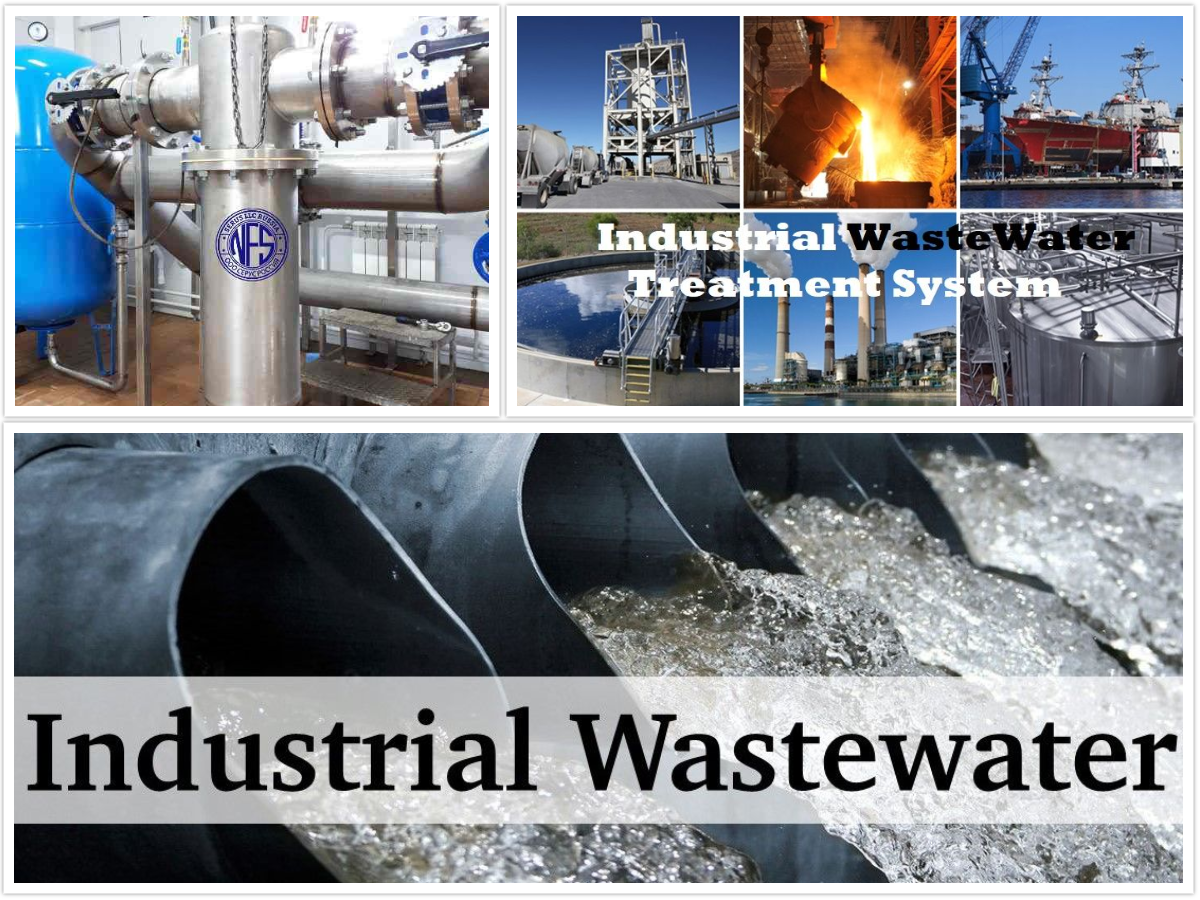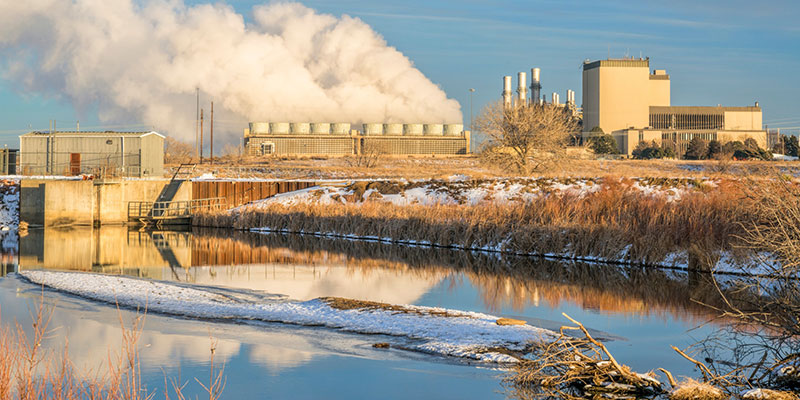Industrial Waste Water Treatment-- Secure the Atmosphere with Professional Water Treatment Solutions
Wiki Article
Advancements and Breakthroughs in Industrial Waste Water Therapy Technologies
The landscape of industrial wastewater therapy is undergoing a transformative shift, driven by advancements that enhance both effectiveness and sustainability. Emerging modern technologies, such as membrane layer bioreactors and microbial gas cells, are redefining impurity elimination procedures while adding to energy generation. Resource recuperation techniques are gaining traction, lining up with round economy concepts. As regulative criteria progress, the integration of AI and artificial intelligence into wastewater administration systems promises to simplify operations and ensure conformity. The full ramifications of these improvements raise vital inquiries regarding their scalability and long-term effect on industry methods.Review of Drainage Treatment Technologies
Wastewater therapy technologies incorporate a series of methods designed to remove contaminants from commercial effluents prior to their launch into the setting. These technologies are important for maintaining environmental equilibrium and ensuring conformity with environmental policies. The main groups of wastewater treatment include physical, chemical, and organic methods, each serving distinct purposes based on the nature of the contaminants present.

Biological treatment approaches utilize microorganisms to weaken organic matter, making them especially reliable for organic-rich effluents. Techniques like triggered sludge and biofilm reactors harness the natural degradation capabilities of germs, bring about considerable decreases in biochemical oxygen demand (BODY)
Advanced Filtering Methods
Advanced filtering methods represent a critical advancement in the world of commercial wastewater therapy, boosting the efficiency of impurity elimination procedures. Industrial Waste Water Treatment. These approaches include a series of innovations, consisting of microfiltration, ultrafiltration, nanofiltration, and reverse osmosis, which offer sequential obstacles for numerous bit sizes and chemical structuresMicrofiltration and ultrafiltration use membrane systems to remove put on hold solids, bacteria, and larger organic molecules, improving the high quality of effluent before further treatment. Nanofiltration links the space between ultrafiltration and reverse osmosis, efficiently getting rid of divalent ions and natural compounds, therefore lowering the tons on downstream procedures.
Reverse osmosis offers the highest degree of purification by allowing only water and tiny particles to travel through its semi-permeable membranes, making it perfect for reclaiming high-quality water from commercial effluents. Current developments in membrane modern technology, consisting of the growth of even more fouling-resistant and durable products, have considerably improved functional efficiency and reduced expenses.
Incorporating these innovative filtering techniques not just improves the total treatment process however also adds to sustainability efforts by making it possible for water reuse and resource recovery in commercial setups. (Industrial Waste Water Treatment)
Organic Therapy Advancements

Moreover, the advancement of engineered organic systems, such as membrane bioreactors (MBRs), combines biological treatment with advanced membrane layer purification. This combination enables for greater effluent quality and decreased impact, making it suitable for space-constrained commercial centers. Innovations in genetically engineered microbes have likewise arised, boosting the biodegradation of certain contaminants, such as drugs and heavy steels, that are typically testing to eliminate.
In addition, the application of bioaugmentation strategies, where helpful microbes are presented to enhance the existing organic therapy processes, has actually shown appealing lead to enhancing therapy performance. These advancements collectively symbolize a fad towards even more effective and lasting biological treatment techniques that can adapt to the progressing intricacies of industrial wastewater streams. As markets remain you could try these out to focus on environmental compliance, these organic technologies will play an important duty in wastewater management.

Resource Recovery Approaches
In industrial settings, the assimilation of resource recuperation techniques has come to be progressively vital for boosting sustainability and reducing waste. These approaches concentrate on extracting useful materials and power from wastewater streams, thus changing prospective toxins into reusable sources.One famous technique is nutrition healing, where nitrogen and phosphorus, frequently existing in excess in wastewater, are caught and transformed right into fertilizers. This not just decreases ecological impacts however additionally offers a round economy remedy for agricultural applications. Furthermore, modern technologies such as anaerobic digestion permit the conversion of natural waste into biogas, a renewable resource source that can counter fossil gas use in industrial operations.
In addition, progressed purification and membrane layer innovations facilitate the healing of commercial by-products such as steels and salts. These recouped materials can be dig this reintegrated right into production procedures, reducing the requirement for virgin sources.
Future Trends in Waste Water Administration
As sectors significantly prioritize sustainability, the future of wastewater management is set to go through substantial transformations. Technological developments, such as man-made knowledge and equipment learning, will enable much more effective tracking and administration of wastewater systems. These innovations can anticipate maintenance requirements, enhance treatment processes, and enhance decision-making, ultimately decreasing operational costs and environmental impact.Moreover, the assimilation of round economic situation concepts will certainly play a vital function in wastewater administration. Industries are expected to shift in the direction of systems that not just deal with wastewater however likewise recover valuable sources, such as nutrients, water, and power. This shift will minimize waste and advertise the reuse of products, aligning with global sustainability objectives.
Arising treatment strategies, such as membrane layer bioreactors and advanced oxidation processes, will certainly additionally improve the effectiveness of wastewater treatment, enabling better effluents ideal for reuse. Additionally, governing frameworks are likely to progress, emphasizing more stringent requirements for wastewater discharge and motivating sectors to adopt ingenious treatment solutions.
Final Thought
In conclusion, the evolution of commercial wastewater therapy modern technologies demonstrates a considerable change in the direction of enhanced effectiveness and sustainability (Industrial Waste Water Treatment). Advancements in innovative filtration techniques, biological therapies, and source recuperation approaches highlight the industry's commitment to environmental stewardship.The landscape of industrial wastewater therapy is undertaking a transformative change, driven by technologies that enhance both efficiency and sustainability.Wastewater treatment innovations include a variety of techniques created to get rid of impurities from commercial effluents prior to their launch right into the setting.Using the power of organic procedures has actually led to substantial technologies in the therapy of commercial wastewater.Furthermore, the application of bioaugmentation methods, where valuable germs are that site presented to improve the existing biological treatment processes, has actually revealed appealing results in enhancing treatment efficiency. These technologies jointly symbolize a pattern towards more lasting and reliable biological therapy methods that can adapt to the evolving intricacies of commercial wastewater streams.
Report this wiki page